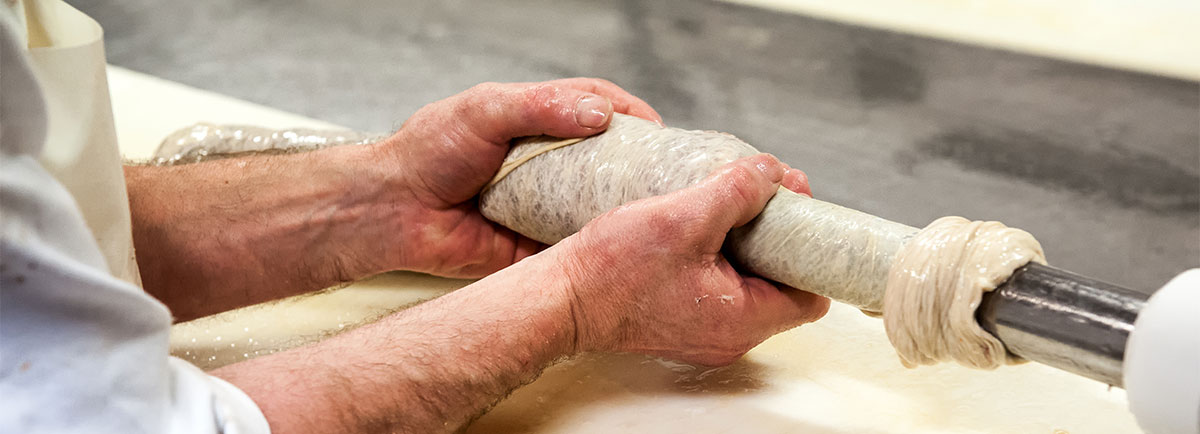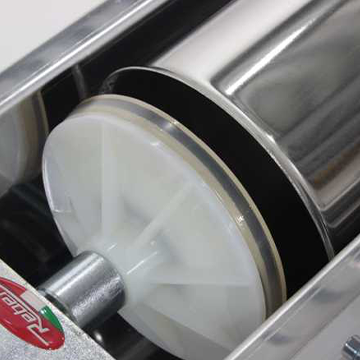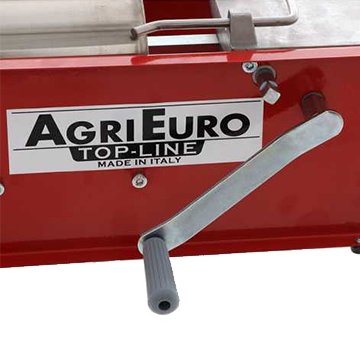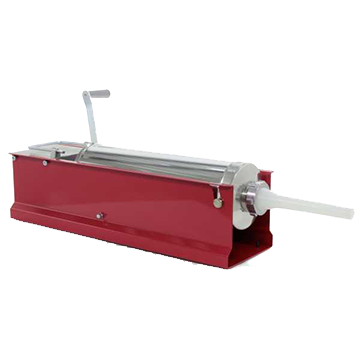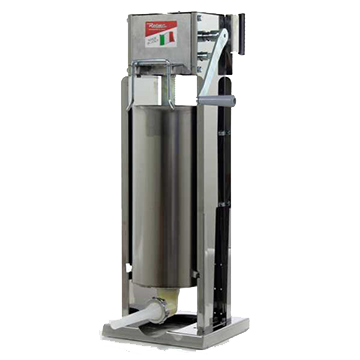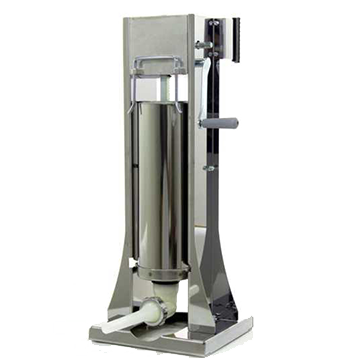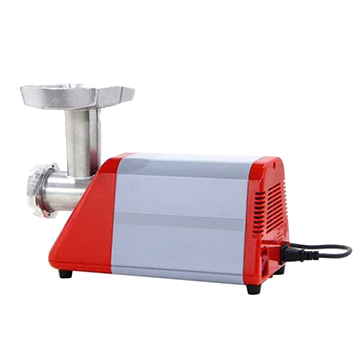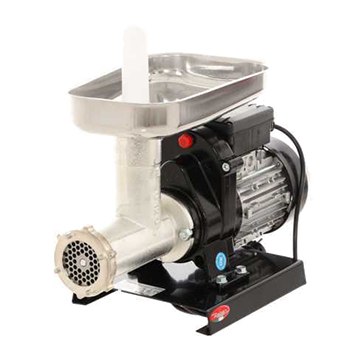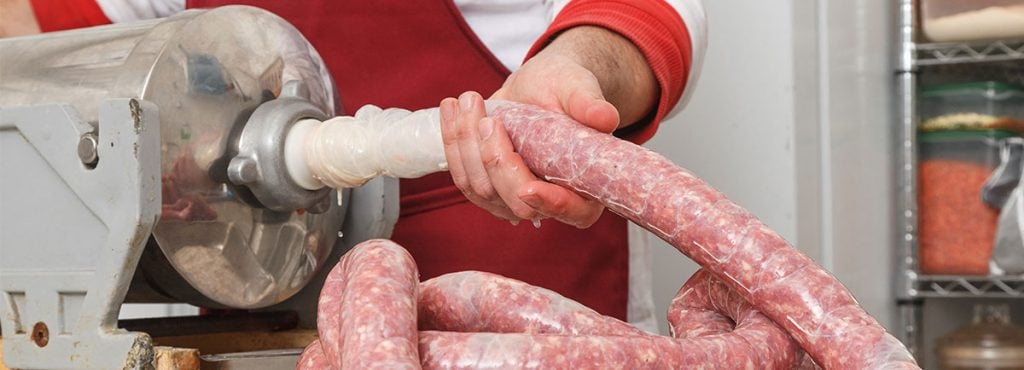The Complete Guide to help you choose the Best Sausage Stuffer
by the Real Experts of Kitchen Equipment
Among the many delicacies of Italian cuisine, cured meats are certainly one of the most delicious popular foods in every area or region of our peninsula, the most widely known ones being pork salami and sausages.
The production of cured meats has been part of human history since ancient times. In Ancient Greece and Ancient Egypt, the first forms of cured meats already existed. Gradually, they were reworked and improved thanks to the new scientific and technological discoveries, as well as new food preservation techniques, until the sausages we know today were produced.
With the arrival of the industrial revolution in the 19th century, the first charcuterie factories and laboratories for sausage meat processing were set up, enabling this foodstuff to be produced industrially and in large quantities through the mechanisation of the processing stages and the introduction of new meat processing machines (from meat mincers to meat tenderizers, mechanical meat mixers and, lastly, sausage stuffing machines).

In this guide we will discuss sausage stuffers and explain the main elements to be taken into account when purchasing one of these machines.
CONTENTS
1. What is a sausage stuffer?
The sausage stuffer is one of the most important tools in the production of salami and sausages. As the name implies, the function of this tool is to “stuff” the minced meat, which is then pushed into a narrow containing bag (i.e. the “casing“, which can be organic or artificial) before moving on to the next processing stages.
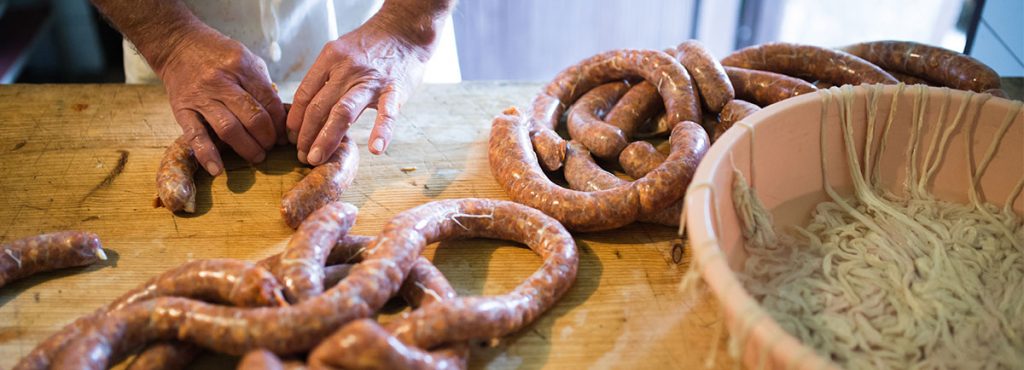
The main components of a sausage filler include the loading tube, which is the largest part of the machine and has the function of containing the minced meat before it is pressed into the casing by the piston. Finally, there are the sausage funnels, which can be placed at the bottom of the machine, whose function is to channel the meat pressed and pushed by the piston into the casing.

Loading tube 
Loading the tube with the minced meat and spices mixture 
Piston
2. Power supplies
The category of sausage stuffers can be divided into two distinct groups: manual and electric.
Let’s take a look at the pros and cons of these two types.
2.1. Manual sausage stuffers
Manual sausage fillers are mainly intended for the occasional production of cured meats in small quantities.

Reber 8961 N INOX – 8 kg Sausage Stuffer 
Handcrank of a manual model 
Reber 8963 N INOX – 10 Kg Sausage Stuffer
They are not recommended for professional use, as they are slower in processing and more tiring for the operator. The manual type is characterised by a handcrank or a buffer which, when activated, pushes the mixture of meat and spices inside the body of the machine, until it is channelled by the funnel into the casing. The great advantage of manual sausage fillers lies in their price, which is much lower than that of electric models.
2.2. Electric sausage stuffers
This type of filling machine is characterised by a small electric motor that drives the piston and makes it move inside the tube, pressing on the ground meat mix and allowing it to come out into the casing.
Electric sausage stuffers are mostly heavy-duty machines, also, in many “multi tool” models they are combined with meat mincers, tomato presses, graters and other food processing equipment.
3. Capacity
As explained in the first section, the loading tube is the part of the machine which contains the minced meat mixture, to be stuffed inside a casing and transformed into sausages or salami.
Generally, the capacity of sausage fillers starts from a minimum of 400 grams (in limited and semi-professional models) and goes up to 15 kg in professional (or industrial) sausage stuffers.
If you are planning to buy a sausage filler to make salami and sausages at home, we recommend to move towards models with a capacity of 3 kg or less.
4. Horizontal or vertical configuration
The configuration of sausage filling machines is an important aspect that must be taken into consideration for two main reasons:
1) the space available
2) the comfort of the operator during use.
If you do not have a large enough working surface to place the sausage filling machine, then the vertical configuration is the best choice. In fact, this type of model is able to process large quantities of product in limited spaces, on a surface of no more than 50 cm in width and depth.

Horizontal sausage stuffer 
Vertical sausage stuffer
In general, models with vertical configuration are larger in size and have a greater capacity than horizontal models, their design also facilitates filling and pressing ground meat mix into the tube.
Finally, on the market there are also double configuration sausage fillers, both vertical and horizontal, which allow the operator to work with maximum freedom, using the configuration best suited to his or her needs.

Double configuration sausage stuffer 
Vertical configuration (1) 
Horizontal configuration (2)
5. Materials
The materials from which a sausage filling machine is made determine its level and quality.
As in other kitchen and food processing machines, stainless steel is the most suitable material, both because it guarantees a high quality of the machine itself, especially when it comes to sturdiness and wear and tear resistance over time, and also because it is the most hygienic and easiest to clean.
Finally, in the lower price range, there are sausage stuffers made of plastic: less resistant and less efficient than those in stainless steel, but undoubtedly much more affordable.
6. Other important features
When choosing a sausage stuffer, it is important to consider a number of elements of the machine in addition to the loading tube, materials and capacity.
In particular, there are three other components that need to be assessed before the purchase: the air release valve, the nozzles (or funnels) and the working speed.

6.1. Air release valve
Especially for manual models, one of the most common “problem” is the presence of air in the minced meat mixture, which makes it more difficult to stuff it into the casing.
Thanks to this valve, the air is able to escape, allowing the piston to easily push the meat into the casing; this way, the operator can work more comfortably and is able to smoothly carry out the meat stuffing process.
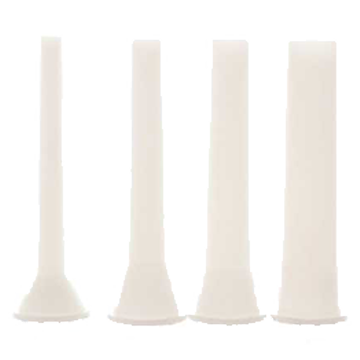
6.2. Nozzles or funnels
Another very important element is the nozzle (or funnel), placed at the bottom of the machine, which has the function to shape the sausage.
There are various types of nozzles of different sizes, ranging from 16 mm to 38 mm, and of different materials, such as plastic or stainless steel (the latter, as we said before, is the best material in terms of efficiency, sturdiness and hygiene).
A good set of nozzles, of various sizes, allows to create sausages of various diameters.
6.3. Working speed
Generally speaking, a quality machine operated manually has at least two speeds: a slower one and a faster one.
For less-experienced users it is advisable to choose this type of machines, because the possibility of working at a slower speed will allow the operator, especially during the first uses, to have greater control of the machine and of the minced meat mix outcome into the casing.
7. Multi tool sausage stuffers
As explained above, some sausage filler machines are equipped with additional functions. Many models, known as “multi tool”, are combined machines that can perform both the function of a sausage filler and, for example, a meat mincer.

Ardes AR7440
2 in 1 Multi Tool Sausage Stuffer
New OMRA TC5 SPREMY
3-in-1 Multi Tool Sausage Stuffer
Reber 9501N N.12
5 in 1 Multi Tool Sausage Stuffer
Multi tool models (sausage stuffer+ meat mincer) are mostly heavy-duty-range products equipped with an electric motor, which is why they are in a higher price range than normal manual sausage fillers.
These models, in addition to working at higher speed, are extremely functional and easy to use, allowing the operator to work in a clean and comfortable way.
8. Cleaning
One of the most important aspects to consider when buying a sausage filling machine (or any other kitchen tool or appliance for food processing) is the hygienic requirements of the product.
Since the material to be processed is raw meat, it is very important to clean the machine thoroughly after each working session with the utmost care and attention.
Before each use, it is essential to ensure that the various components of the machine, particularly those that come into contact with the food (loading tube, piston, nozzles and funnels) are well cleaned and do not show any traces of oxidation of the materials, remains of old processed foodstuff or dirt in general.
To minimize the risks of bacterial proliferation, the machine needs to be disassembled and its various components carefully cleaned one by one using disinfectant cleaners, able to eliminate all the bacteria carried by the meat.
9. The best brands
Before proceeding with the purchase of a sausage filler, it is advisable to move towards the most professional and well-known brands in the world of kitchen machines. Choosing a reliable manufacturer provides the user with the certainty of a safe and efficient machine to carry out work in a smooth and trouble-free manner.
We would like to recommend the following brands for both hobby and heavy-duty models: Reber, BuoQua, Henreal, Tre Spade and Palumbo Pavi.



